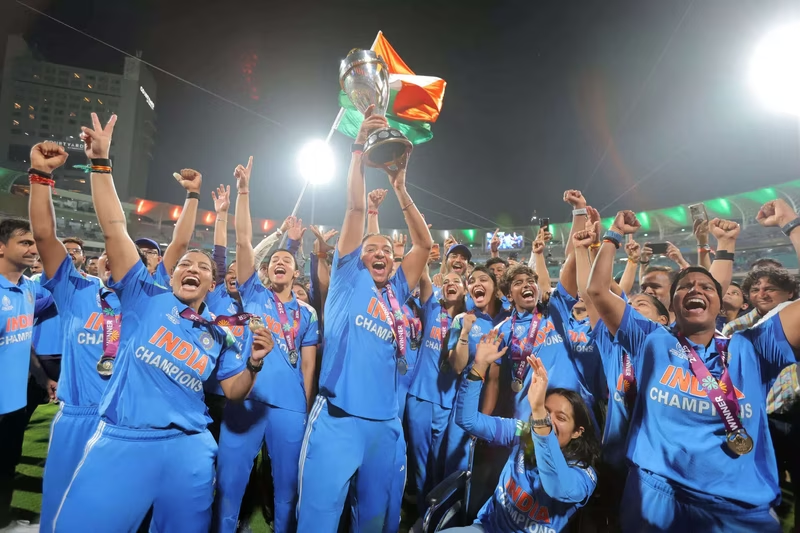India’s Women’s Cricket has arrived, and the nation is celebrating its most significant sporting triumph. On a historic Sunday at Mumbai’s DY Patil Stadium, the Indian women’s cricket team secured their maiden ICC Women’s ODI World Cup title, defeating South Africa by 52 runs in the final . This isn’t just a victory; it’s the dawn of a new, self-sustaining era for the sport in the country.
Table of Contents
- World Cup Glory: A Long Time Coming
- The Pay Parity Push
- WPL: The Game-Changing Catalyst
- The Road Ahead for India’s Women’s Cricket
World Cup Glory: A Long Time Coming
For decades, Indian women’s cricket operated in the shadows. The heartbreaks of the 2005 and 2017 World Cup finals were painful reminders of a system that wasn’t fully invested . But the 2025 triumph is different. This victory feels foundational. Guided by the experienced Harmanpreet Kaur and powered by the fearless hitting of Shafali Verma and the crafty bowling of Deepti Sharma, India finally claimed the ultimate prize . The entire nation erupted in joy, knowing this win was about more than just a trophy—it was a validation of years of struggle and a promise for the future.
The Pay Parity Push
This historic win didn’t happen in a vacuum. A crucial pillar of this new dawn is the Board of Control for Cricket in India’s (BCCI) landmark decision on pay parity. Since late 2022, the BCCI has ensured that players are paid the same match fees regardless of gender: ₹15 lakh for a Test, ₹6 lakh for an ODI, and ₹3 lakh for a T20I . This wasn’t just a financial adjustment; it was a powerful statement of equality and a massive confidence boost for the players. To top it off, the BCCI announced a record cash reward of a staggering ₹51 crore for the World Cup-winning squad, a historic gesture that underscores their commitment to the women’s game .
WPL: The Game-Changing Catalyst
If pay parity was the foundation, the Women’s Premier League (WPL) was the rocket fuel. Launched in 2023, the WPL created a high-profile, high-pressure domestic ecosystem that Indian players had never experienced before. It gave them a stage to compete alongside and against the world’s best, building their confidence and sharpening their skills in front of massive crowds and a national audience . The 2025 World Cup was the first major tournament after the WPL’s inception, and the difference was palpable. The team that took the field in Mumbai was composed of athletes accustomed to big moments, a direct result of the WPL’s success . BCCI chief Jay Shah’s vision for a long-term, structured investment in women’s cricket, with the WPL at its core, has now delivered its ultimate reward .
The Road Ahead for India’s Women’s Cricket
The 2025 World Cup win is not an endpoint, but a powerful launchpad. It has the potential to be India’s “1983 moment” for women’s cricket—a spark that ignites a generational shift. With a clear pathway from grassroots academies to the WPL and then to the national team, young girls across the country now have visible heroes and a tangible dream. The commercial viability of the women’s game is now undeniable, promising more sponsorships, better infrastructure, and an even greater focus on player development. The future of India’s women’s cricket is not just bright; it’s brilliantly self-sustaining.
